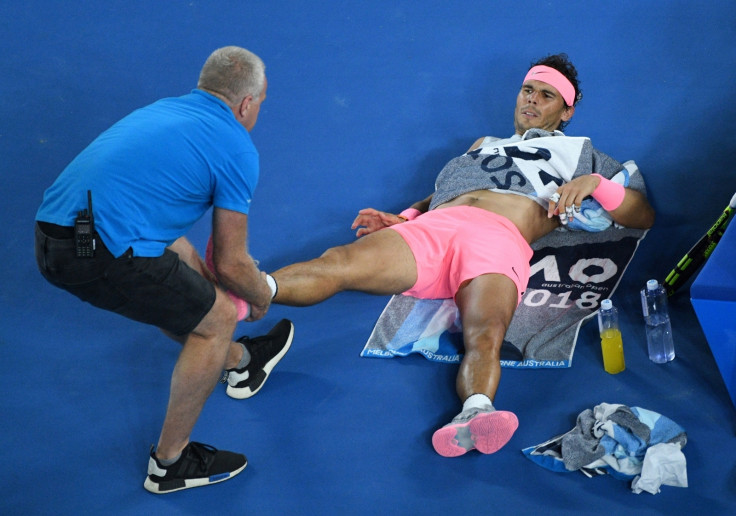Sports medicine specialist reveals factors leading to Rafael Nadal's injury and warns other players
Nadal retired in the fifth set of his quarter-final match against Marin Cilic in the Australian Open

Sports medicine specialist Dr Joshua Dines believes that Rafael Nadal is not the only top player who will miss tournaments due to injury problems, and others around him will follow him into the treatment room. The reason, he said, is the change in courts and equipment that will lead to longer and faster rallies but will also take a bigger toll on the body.
Nadal retired in the fifth set of his quarter-final match against Marin Cilic in the Australian Open because of a setback, ending his hopes of a 17th Grand Slam title.
Following the event, the Spaniard was taken for diagnosis and scans have shown that the world number one suffered a hip injury and will be ruled out for up to three weeks.
However, Nadal is confident that the setback won't affect his calendar and is expected to play the Mexican Open, which starts on 26 February, before getting back into serious action in Indian Wells and Miami.
Nadal's injury problems date back to the end of 2017 which saw him pull out of the Paris Masters and the ATP World Tour Finals with a knee setback. The injury delayed his return to competitive action before the start of the year and he went into the Australian Open without any preparation under his belt.
He paid the price for his hastiness as he had to pull out while Roger Federer made his way into the finals to win his 20th slam, increasing his lead to four over the Spaniard.
Nadal has since blamed the ATP schedule for the injuries to top players. Dines, meanwhile, said he believes there are multiple factors involved here and that Nadal will soon be joined by other players in the top five as they start feeling the effects.
"There are a multitude of factors increasing the strain on players' bodies. Unfortunately it is unlikely that Nadal's injury will be the only one to a top five player this year," Dines told Reuters, as quoted by the Express.
"With the changes in equipment and court surfacing and improved athleticism, the players now move quicker, hit each shot with more power and are forced to play matches that are longer and tougher.
"Racquets were originally made of wood, then graphite and finally carbon fibre, which encourages bigger strokes with more topspin.
"As equipment technology has improved, players can hit the ball harder and with more topspin repeatedly, making every match more physical and full of powerful, long rallies," he added.






















